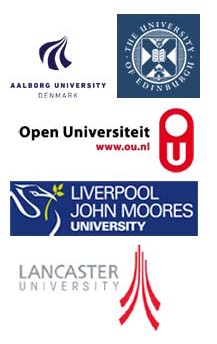

A social network analysis of learning in corporate training context: Analysing Sosyal 2.0 as a space for networked learning
Didem Tufan, Soner Yıldırım, Department of Computer Education and Instructional Technology, Middle East Technical University. Banu Günel, Graduate School of Informatics, Middle East Technical University
It is obvious that, human life is being affected by the facilities of new technologies with all of its aspects including learning and development. On the other hand, besides the increasing use of the facilities, we have limited knowledge about the question of how social interaction and Web 2.0 technologies affect the training environments in workplace context. This study, which is a part of an on-going doctoral research, aims at investigating the interactions among participants within the networks constructed in an online learning environment in corporate training context (Sosyal 2.0) while verifying network coding procedures and providing evidence for the methodological issues regarding the use of SNA in combination with other methods in researching Networked Learning.
Training and adult learning literature is limited when compared to the areas of formal education, teacher training or higher education. The current study, examining corporate training, aims at contributing to the literature, as the field of NL research is untouched, especially in Turkey.
The study is conducted in cooperation with Enocta, an e-learning company in Turkey. The logs of Enocta's LMS with social interaction capabilities, called "Sosyal 2.0", are used as the data source. The members of Enocta who participate by using facilities of Sosyal 2.0 formed the actors of the network. Networks are constructed according to different web 2.0 facilities in Sosyal 2.0: "wallpost-comment" (WPC), "wallpost-like" (WPL), "question-answer" (QA), "question-comment" (QC), "question-like" (QL) and "blog post-like" (BPL) networks are constructed. To be able to examine the interactions among participants Average Degree, Degree Centralization, Closeness Centralization, Betweenness Centralization and Cohesion analysis are carried out using PAJEK Software.
The results revealed that the tightest interaction was constructed via wall platform in Sosyal 2.0 in comparison to BPC, BPL, QL and QA platforms. The results of cohesive sub-groups reveal that, the users of Sosyal 2.0 form a comparatively big community by using wall platform. On the other hand; QAC, BPC and BPL networks had revealed weak components and small mutual relationships. These findings indicate that the information sharing among participants are not dispersed into several, middle sized sub groups in Sosyal 2.0. Rather it is more centralized in wall platform and mostly in mutual level for the QAC, BPC and BPL networks. These findings deserve further investigation including users' preferences and gratification and individual level network analysis methods.
Keywords
Networked Learning, LMS, Computer Supported Collaborative Learning, Social Network Analysis
| Invited Speakers | Community & Hot Seats| Past Conference Proceedings | Doctoral Consortium | Contact |